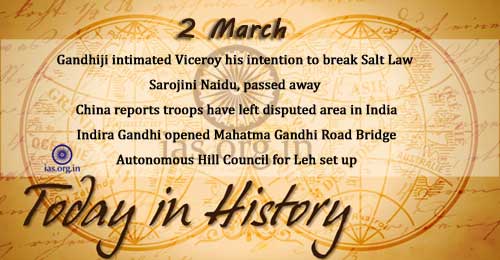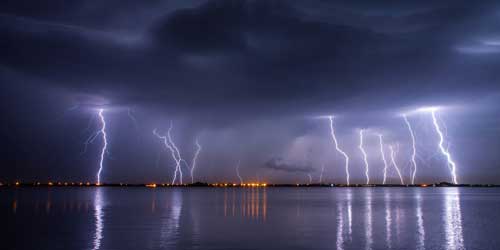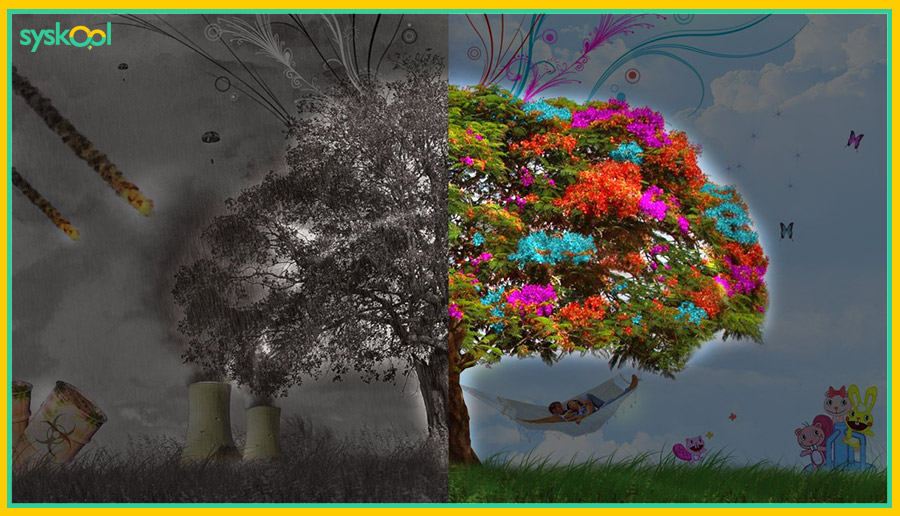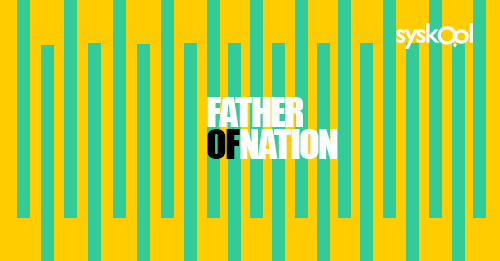Different Types of Pollution
Pollution can be classified mainly on the basis of (i) Environment (water, soil, and air etc.); and (ii) Pollutants (lead, carbon-dioxide, solid wastes etc.). On the basis of these two ways pollution may be classified as:
(i) AIR POLLUTION
Due to some natural processes or human activities the amount of solid wastes or concentration of gasses other than oxygen increases in the air which otherwise has fixed proportions of different gasses in it. The air thus becomes polluted, and this process is called the AIR POLLUTION.
The pollutants polluting the air range from visible particulars such as smoke and dust to invisible and odorless gasses such as carbofl- monodioxide. They originate from manufacturing processes, power generation, transportation, waste disposal, chemical processing, domestic activities, agricultural operations, forests fibers and a wide variety of other sources or events.
In big industrialized cities, air is contaminated with sulfur-dioxide, cotton dust, coal dust and chemicals etc. that are highly injurious to the lungs and the whole human body. The supersonic jets and jumbo-jets flying high in the air (about 1-5 km) pollutes the air by exhaust smoke which floats like thin clouds in the atmosphere. The water-vapour and suspended particles in such clouds react with sunlight to produce ‘smog’. This smog increases the atmospheric temperature and also cuts the ozone layer that saves the earth from being exposed to ultraviolet rays of the sun.
The main pathological effects (diseases) caused by air pollutants include respiratory disorders, jaundice, reduction in oxygen carrying capacity of blood, irritation of eyes and throat, causing headache, cancer, and death.
Read Also: Startling Facts about Pollution
(ii) MERCURY POLLUTION
In recent years increasing amounts metal have been discharged into the environment by industries and out of these ‘mercury’ has been responsible for several deaths in Sweden and Japan and has caused ‘Minamata’ disease particularly in Japan. Various rivers, lakes in Sweden have become heavily polluted by increased use of mercury compounds as fungicides and algicides in paper making and pulp lumber industries.
(iii) NOISE POLLUTION
‘Noise Pollution’ is gaining importance in over-crowded and large cities. During office times in the morning and evening, the noise reaches the bursting Jimits. Loud-speakers combined with traffic noise cross the limits of noise. The physical and mental health of people get adversely affected leading to nervous break-down and brain-haemorrhage etc.
It is true that traffic cannot be stopped but restrictions can be placed on the unnecessary blowing of horns, missing spark plugs, driving without silencers, increasing use of loud-speakers, music in celebrations, as these may create problems for heart patients. Noise increases the level of cholesterol in the blood, increa¬ses blood pressure and causes the headache etc.
Noise is measured in the unit of ‘decibel’ (dB) which is the tenth of the largest unit, the ‘bel’; when decibel value reaches above 80 dB it indicates noise pollution.
Don’t Miss: Solid Waste Management (SWM) : Growing for Solutions
(iv) PESTICIDE AND HERBICIDE POLLUTION
Pesticides and Herbicides are chemical compounds specifically used to destroy animal pests and weed pests and unwanted weed growth respectively. Ecologically, these have created two major problems which are not anticipated. Firstly, many of them have persisted and accumulated in the environment harming or contaminating numerous animal or plants and secondly, many of them have directly or indirectly affected human health.
The most commonly used pesticides are DDT, Dieldrin, heptachlore, and thiodan. Similarly, the important herbicides 2, 4-D; 2, 4, 5-T, dioxin have been extensively used for controlling weed pests and weeds. These chemical reach the water bodies and become the parts of animal bodies living therein.
(v) RADIOACTIVE POLLUTION
Radioactive Pollution is closely related to air and water pollution. It is due to the increase of radio isotopes in our environment as a result of fall¬out from nuclear bombs and emissions from the industrial use of nuclear energy.
Radioactive isotopes or radio nuclides have been grouped as radio nuclides of ecological impor¬tance into three categories :
- Those which occur naturally in rocks and soil, such as radium 226; uranium 235 or 238; thorium 232; potassium 40; or carbon 14.
- Those which are nuclides of natural constituents of living organisms.
- Those which occur as fission products from atomic testing of nuclear waste disposal.
Water used to cool the atomic reactors and later on discharged into rivers is usually warm and contains radioactive substances. One of the radio isotope of great biological interest is strontium-90. It behaves like calcium in the biochemical cycle. Thus, if strontium-90 gets into animal’s body, it stays in bone tissue close to the blood-forming tissue, throwing radiations that may kill the living tissues or produce cancer.
Also, Read: Pollution Definition, Aspects, and Solution
(vi) SOIL POLLUTION
The Majority of rural and about 10 percent of the urban population uses vacant land as open-air lavatory. The sink of such human wastes is sickening and is directly or indirectly responsible for many human diseases. This invites pigs, vultures, crows and flies (flies act as carriers of diseases). Waters like everyday domestic refuse consisting of vegetable’s skins, fruits, used cans, bottles, jars, plastics, saw dust, left over food, metal and or plastic caps of soft.drinks etc. also add to pollute the soil and create unhygienic conditions.
(vii) THERMAL POLLUTION
Discharge of heat in the form of effluents, hot water, and hot air industrial processes create ‘thermal pollution’. Such industries use water for cooling purposes and discharge it afterward into streams at a higher temperature. The hot water exerts lethal effect on animals living there. Some are even killed. Less hot water causes bacterial diseases in salmon fish.
(viii) WATER POLLUTION
The term ‘water pollution’ can refer to any type of aquatic contamination between two extremes:
- A highly enriched, over productive biotic (living) community, such as river and lake enriched with nutrients from sewage or fertilizers; or
- A body of water poisoned by toxic chemicals which eliminate many living organisms or even exclude all forms of life.
Increasing population, heavy industrialization, and urbanization is mainly responsible for the water pollution.
The main pollutants of water are nutrients, petrochemicals, pesticides, weedicides, industrial effluents, excreta, bacteria, radioactive substance, fertilizers, detergents, waste materials, silt, thermal and heavy metals.
Main pathological problems (diseases) caused due to water pollution include diarrhea, liver cirrhosis, lung cancer, colic gastro-intestinal tract disorders, kidney diseases, paralysis, colic pain, bone deformities, cancer and even death and so on.
Have a look at:





